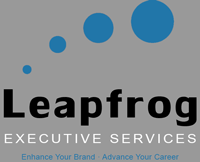About Your Photograph…
Category : 2022
If a picture is worth a thousand words, some people don’t know when to stop talking.
A review of photos professionals select to represent themselves across social media prompt this brief and candid reminder about first impressions, lasting influence, and annoying incongruence. Thanks to social media, your personal and professional lives are no longer separate—you have a life. Anyone anywhere anytime can dig into your life and draw conclusions about you without ever meeting or interacting with you.
Multiple experiments by two Princeton psychologists determined we form an impression from someone’s face in one tenth of a second. The traits assessed most quickly are attractiveness and trustworthiness. While you may not be able to do much about the first factor—you can do a lot to impact the second.
The dynamics of first impressions compound when creating the impression online. Jeremy Biesanz, Ph.D. at the University of British Columbia engaged with over 1,000 people exploring the accuracy and bias of first impressions formed under differing circumstances. Biesanz found the accuracy of impressions varied little between mediums, but impressions formed on-line tend to be more negative than those created in-person. Another study found that after forming a first impression, people tend to hang on to the impression, even after they are given facts that contradict what is believed.
A casual scan of LinkedIn profiles shows glamour shots, avatars, a Hollywood character’s photo, wedding photos, a shirtless weightlifter, and someone slugging their way through a Tough Mudder. Here are tips to help ensure your immediate impressions are as positive as possible.
Avoid location shots: It appears that when some people were told to update their LinkedIn photos, they jumped in their cars, grabbed their phones, and posted what they got. The result is an arm’s-length image that stirs reminders of wet soccer clothes and stale French fries. Unless you are Flo from the Progressive Insurance commercial, the interior of your car is a lackluster setting for a business photo. Slightly better (or worse) is an image shot by a friend for whom photo composition is not a marketable skill.
Watch the background: The background of a professional photo should align with your profession, not your hobbies, weekends, or causes you support. An online image shouldn’t raise a question you don’t have an opportunity to answer. A plain background with colors that contrast your hair and clothing makes you stand out—instead of raising questions about what you do in your spare time.
Fly solo: Your online image isn’t the place to highlight your ability to crop a picture. Capturing a slice of yourself from a picture taken at a family gathering looks efficient—and cheap. That treasured photo of you shaking the hand of a famous person is memorabilia, not good marketing.
Keep it current: Your visual images are part of your brand. Like houses, brands show their use over time. While the structure and character remain solid, the visual aspects can begin to shout, “dated.” An executive in his 50s that dresses like he did in the 90s screams “update needed” as much as a 30 year-old house with the original wallpaper. If you are past 40 and your professional photo is more than five years old, it is time for trip to a professional photographer. Few things spell awkward at the start of a networking meeting or interview more than, “Oh, you look a lot different than your picture on LinkedIn.”
Clothes, like people, often lose their shape before they wear out. “This still looks okay,” is not the mantra of a personal brand that shouts relevance. A professional on the back nine of their career shouldn’t dress like a mid-life crisis waiting to happen. Neither should that person look like the last suit they bought was the year John Molloy’s “Dress for Success” started making its way to the shelves of Half Price Books. As we all emerge from various forms of pandemic-driven isolation, none of us should look like we spent the past two years tucked safely away in a cave.
Align the platforms: While LinkedIn is used more for professional networking, what you post on Facebook, Instagram, and Twitter are part of the package. It is undeniable that surveying social media often occurs in a hiring process, and in other circumstances. Facebook and Instagram postings often leave little room for imagination and too much space for interpretation. While photos inspired by the moment make memorable family photojournalism, they also become part of your public record and should be posted with discretion.
We may not get a second change to make a first impression and it can take a lot of work to undo a first impression after it is made.
If you want to explore how to create a congruent and effective personal brand message, give Leapfrog Executive Services a call.
